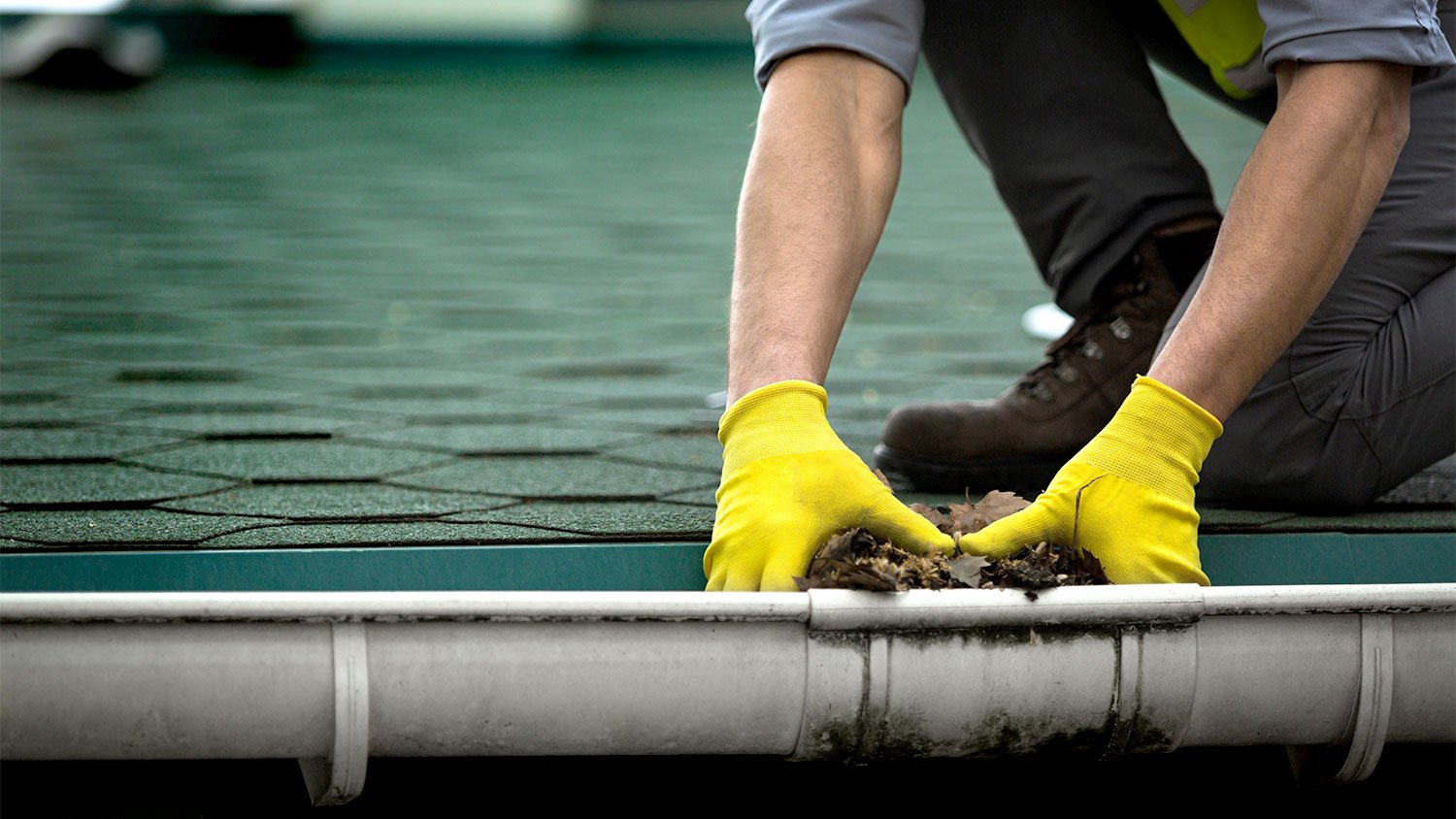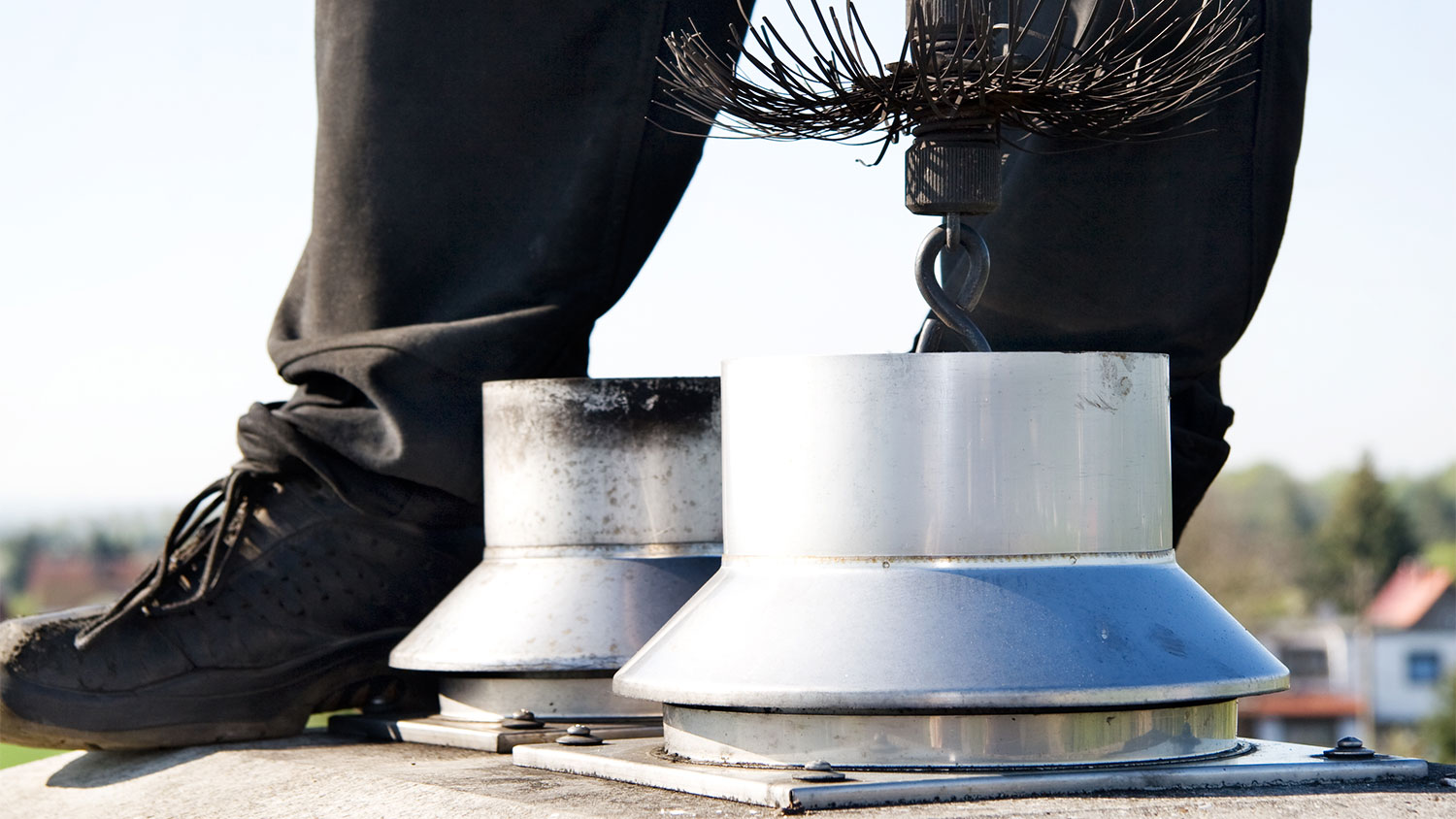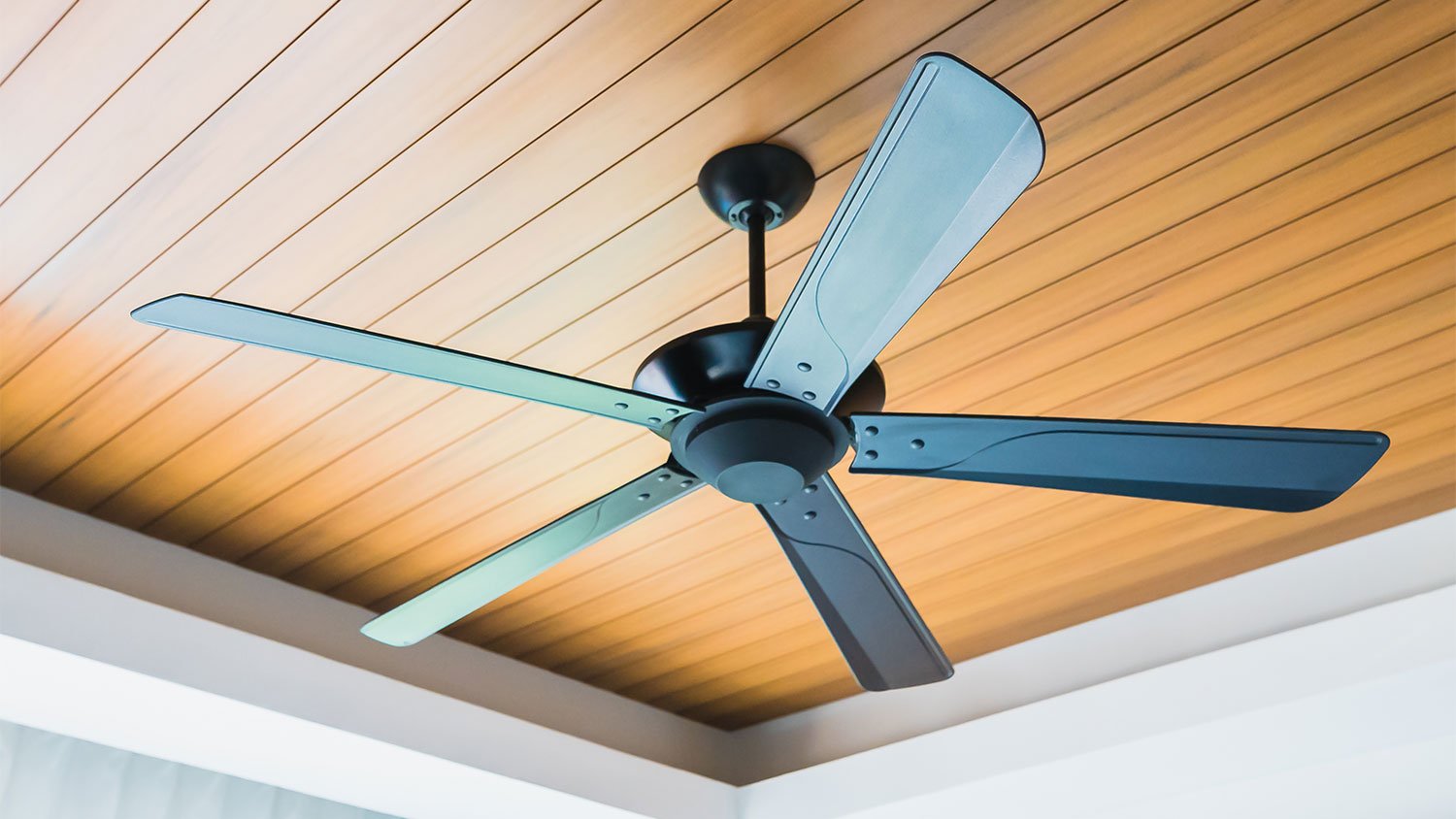
Building permits are essential. Here’s everything you need to know about building permit costs to budget accordingly for your building project.
Give yourself some peace of mind by tackling your winter maintenance chores


Preparing your home for the change of seasons can be daunting, but using a winter home maintenance checklist will help you tackle all your seasonal chores confidently, from gutters to basements and everything in between. If you find any serious issues, you can hire a local home maintenance pro to handle your repairs. Here’s your checklist to keep you on track for a warm and cozy home this winter.
Check off these outdoor upkeep items before winter hits.
Beginning with the top for a top-to-bottom winter home maintenance checklist starts with the roof. Take a good look at the roof from the ground, or use a ladder to get a better look. Here’s what you should look for:
Loose shingles: Ensure that you don’t have any loose tiles or shingles that could easily be knocked loose from your roof. You should also check for bare spots or missing shingles.
Damaged flanges: The seals around the electrical conduit, chimneys, skylights, and exhaust fans can wear out over time. Check to ensure they’re still in good shape and all seals are still intact.
Leaves: Leaves, pine needles, or other debris can get built up on your roof and trap moisture, making a perfect place for ice, moss, or even small plants to set up shop and cause damage. Clear them off with a leaf blower or gently remove them with a push broom to keep them from becoming a hazard.
Old antennas: Old TV antennas, satellite dishes, or other equipment can loosen up and become dangerous over time. If you have deteriorating, unused equipment on the roof, consider taking it down to avoid future problems.
Keep in mind that a professional roof inspection is the safest and most effective way to stop roof problems in their tracks. The cost of a roof inspection ranges from $125 to $350.

Clogged gutters and downspouts can cause major headaches during winter storms, from forming ice dams during snow and ice storms to allowing water and debris to collect on your roof. If you want to DIY cleaning your gutters and downspouts, you can use a leaf blower, hose, or scooping tool.
However, it’s best to hire a professional gutter cleaning service to conduct this essential task. The cost of professional gutter cleaning is between $120 and $230, ensuring that this maintenance task is done safely and effectively.

If you have a fireplace or a wood-burning stove, you should ensure your chimney is safe and clean before firing it up for the season. Keeping your chimney in good working order is an important part of fire safety, so this is a top priority for winter home maintenance.
Visually inspect your chimney: Look out for loose bricks or eroded mortar on your chimney outside.
Hire a chimney sweep: Hire a chimney professional to inspect and sweep your fireplace is recommended to make sure everything is safe and working well.
Make repairs: If you have loose mortar or bricks, you need to retuck your chimney to make it safe. Hiring a mason with expertise in chimney repair is the safest way to ensure that your fireplace is operating safely.
Clean your brick: Get rid of soot or other buildup on the inside part of your chimney and hearth.
If you have any damaged trees near your home, you should trim them before the weather gets cold enough to cause ice. Ice storms, snow buildup, and strong winds can cause tree limbs to fall, creating dangerous and damaging situations.
Inspect trees for damage: Look for dead or damaged tree limbs and bushes.
Trim damaged limbs: If you can reach them yourself, trim damaged branches to keep them from falling during storms. If not, hire a professional tree trimming service.
Trim bushes: You should trim bushes and shrubs at least two feet away from your house.
Hire a tree care company: Any higher branches, severely damaged trees, or larger branches that are close to the house should be dealt with by a tree care expert to avoid accidents.
Outdoor furniture is more durable than furniture designed used indoors, but that doesn’t mean it will hold against ice and snow. Bringing furniture indoors for the cooler season when not in use will extend the life of your outdoor furniture and make it much easier to clean and use come spring.
Clean your furniture: Use soapy water to wipe down furniture and remove pollen and dirt.
Clear away leaves: Blast leaves and other debris off outdoor furniture with a hose.
Dry out cushions: Cushions and any other porous surfaces should be thoroughly dried in the sun to prevent mold and mildew.
Store furniture: Furniture should be stored in a dry place like a garage or shed.
Any garden tools left outdoors below freezing should have the water drained out to prevent damage from water expanding when it freezes. Taking portable equipment indoors for the winter is also a good idea to keep it from getting damaged.
Drain outdoor spigots: Drain outdoor spigots and spouts and cover them to insulate them against ice and snow getting inside.
Turn off the water outdoors: If you have a shutoff valve to your outdoor faucets, you should shut it off to keep water inside the uninsulated pipes from freezing.
Drain hoses: Shake water out of hoses and other portable irrigation equipment and move it indoors for storage.
Blow out your sprinkler system: Use an air compressor to blow any residual water or debris out of the water lines in your sprinkler system, or have a maintenance expert do it for you.
Winter can be tough on pavement, with water freezing in cracks and snow removal equipment scraping the surface. Winterizing your driveway and any other pavement will help you prevent damage and avoid costly repairs.
Inspect pavement: Look for cracks in the surface of the pavement and check for loose pavers in walkways.
Patch cracks: Fix small cracks in pavement using a patch kit to seal them up against water and ice damage.
Repair mortar: Repairing mortar between pavers can keep any damage from turning into a major problem during freezing winter temperatures.
You should store lawn and garden equipment like lawnmowers, leaf blowers, clippers, and trimmers to protect them from the cold weather. Putting them away with care can extend the life of lawn and garden tools, and make the transition to spring easier when the time comes.
Drain gas from lawn tools: Mowers, chainsaw, and leaf blowers shouldn’t be left with gas in them because the fuel can become stale over time and damage the engine.
Disconnect the power: Ensure that the spark plugs, power cords, and batteries are disconnected.
Clean blades: Using machine oil or other metal-friendly cleaner, wipe down blades and parts with a rag to remove clippings and dirt from the tool.
Dry out tools: If tools are damp, ensure they’re dry before being stored to prevent rust.
Oil and wax blades: Apply maintenance oil or wax to tool blades on clippers, mowers, and shears to protect them from moisture while in storage.
Now is a good time to bring out winter snow removal equipment and inspect before it’s time to use it. There’s nothing worse than discovering you don’t have a way to clear the driveway the morning after a snow storm.
Check shovels: Check your shovels for cracks and make sure they’re sturdy enough to last the season.
Wax your shovels: Apply some paraffin or beeswax to your shovels to protect them from getting scraped up and allow snow to slide off more easily.
Prepare your snowblower: Change the oil in your snowblower and make sure you have some gas for it, if you have a gas-powered machine.
Test your snowblower: It’s a good idea to fire up your snowblower once before you need to use it on snow to check for any issues before they become an emergency.
Turning off your outdoor faucet before the freezing temperatures set in can prevent pipes from freezing and bursting over the winter.
Open faucet: Locate the outdoor faucet’s shut-off valve, open it, and allow the excess water to drain out.
Drain bleeder cap: Repeat the previous step with the faucet’s bleeder cap.
Disconnect hoses: Remove hoses from the outdoor faucet, allow them to drain, and then store them away.
Follow these guidelines for preparing the interior of your home for winter.
Improve the efficiency of your home heating system by cutting down on drafts and air leaks. Take care of sealing up any trouble spots and ensure your doors and windows have functioning weatherstripping.
Look for gaps: Visually inspect your windows and doors for gaps around the edges that can let in a draft.
Apply new weather stripping: Use foam or rubber weatherstripping to seal around windows and doors. You can also use removable caulk in places you can’t seal with weatherstripping.
Install removable storm windows: Installing exterior storm windows before it gets too cold is important. If you have older windows, you can also use interior storm windows to insulate against the cold.
Take down your screens: If your screens are removable, take them out and store them to keep them from getting damaged by ice.
Use temporary insulation: Where necessary, on older, single glazed windows, use a temporary insulation kit to keep drafts to a minimum.

As the seasons change, your HVAC system or furnace needs some attention. To ensure your heating systems are in working order, follow these steps.
Conduct a visual inspection: Take a look at your heating system or furnace to see if there are any visible problems like issues with wiring or filters. If so, hire a HVAC or furnace professional to repair them.
Conduct a heating test: Even if it’s not time to have the heat on yet, turning it on to ensure everything is working properly before it’s necessary to have the heat on all the time can alert you to problems ahead of time and avoid emergencies.
Check and replace the filter: If your HVAC filter looks like it’s nearing the end of its life, or if it’s time to change it based on the directions for your filter, now’s a good time to swap it out.
Vacuum vents and heaters: If you have forced air heat, it’s a good idea to vacuum the vents before turning on the heat for winter. The same goes for radiators and baseboard electric heaters. Dust can build up in the off-season and will cause odors if it gets too hot when the heat comes on.
Regularly cleaning your chimney has many benefits including reducing the risk of fire, burning hotter fires, and heating more efficiently.
It’s best to leave chimney maintenance to a trained professional due to safety and health risks. Hire a local chimney sweep for this essential task, which involves climbing onto your roof and using specialized chimney-cleaning tools. You can expect a chimney cleaning to cost $130 to $380.
Keeping the windows sealed up tight to prevent drafts can exacerbate other problems, such as a build-up of carbon monoxide inside your house. Since many electrical fires are caused by space heaters and other appliances used more during the winter, checking smoke alarms should also be on your list.
Perform a test: Most smoke alarms and carbon monoxide detectors have a test button to make sure they’re working properly.
Replace batteries: If you have a system that isn’t hardwired into your home, you should replace the batteries once per year to keep your hazard detection equipment in working order.
Consider an upgrade: Smoke detectors and carbon monoxide detectors usually last between eight and ten years. If yours are nearing the end of their lifecycle, winter maintenance is a good time to replace them with new ones.

Switching ceiling fans to blow hot air down instead of drawing cooler air up from the floor can save money on your energy bill and make your house feel warmer.
Turn the fan off: Before going for the switch, turn the fan off to prevent injury.
Find a ladder: Use a step stool or ladder to reach the fan. Don’t stand on a chair or other furniture because it isn’t designed for climbing and can pose a falling hazard.
Locate the switch: In the center of your ceiling fan, you will likely find a switch that will change the direction of your fan.
Ensuring your foundation isn’t leaking and your basement is well insulated against the cold will set you up for a snug and cozy winter. Taking care of any repairs before freezing temperatures exacerbate any cracks or problems can save you stress as well as money down the road.
Look for cracks: Check for small cracks in your foundation and hire a foundation specialist to fix them before they worsen.
Check for moisture: Check for moisture in your basement and address any issues. If you’re not sure a visual inspection is sufficient, you can also use a hygrometer to measure the humidity level.
Service your sump pump: Hire a professional to inspect and service your sump pump to make sure it’s working properly.
Insulate entrances: Any exterior access to your basement should be insulated from the cold to prevent drafts and keep your HVAC running efficiently. You can use an insulation kit or hang insulation blankets over the openings to bulkhead doors or access hatches to cut down on drafts.
Gathering extra supplies for snow storms, power outages, and other winter emergencies before they come up is a good way to keep your winter maintenance on track. Stock up on the following items:
Snow removal supplies: Gather de-icer, salt, ice melt, sand, and other supplies.
Candles and battery-powered devices: Get all of your emergency backup power and candles ready and store them in an accessible place in case of a power outage.
Alternative heat sources: You should prep gas-powered space heaters and other emergency heat sources so that they will be ready to go in case of an emergency. Having a supply of wood on hand for wood stoves and fireplaces is also a good idea.
From average costs to expert advice, get all the answers you need to get your job done.

Building permits are essential. Here’s everything you need to know about building permit costs to budget accordingly for your building project.

Sometimes, all your home needs is a new wall to make a room or provide an updated function to an existing space. Learn how much it costs to install a new wall.

Use our guide to calculate the cost to install a stair lift in your home. Prices depend on the type of stair lift, including the seat style and other advanced features.

What is dry rot and how do you manage it? Dry rot is a fungus that attacks wood. Learn how to get rid of it before it causes structural damage.

When planning a home renovation or remodel, asking your contractor to reduce the price of the job is never an easy task. But negotiation is possible! Read these tips for negotiating with a contractor the right (and effective) way.

Designing and building dormer framing may not be a DIY task, but it does help to know how the addition takes shape. Here are the ins and outs of dormer framing.